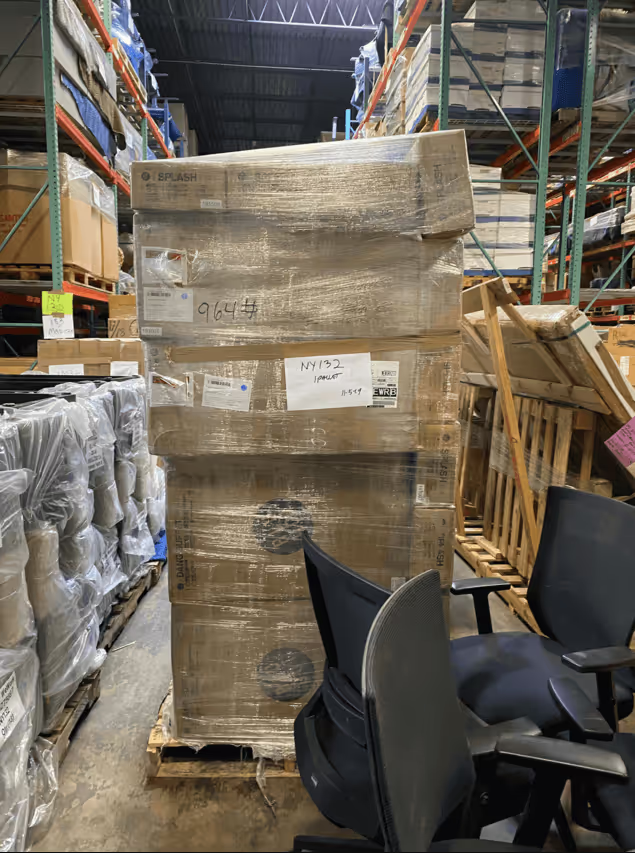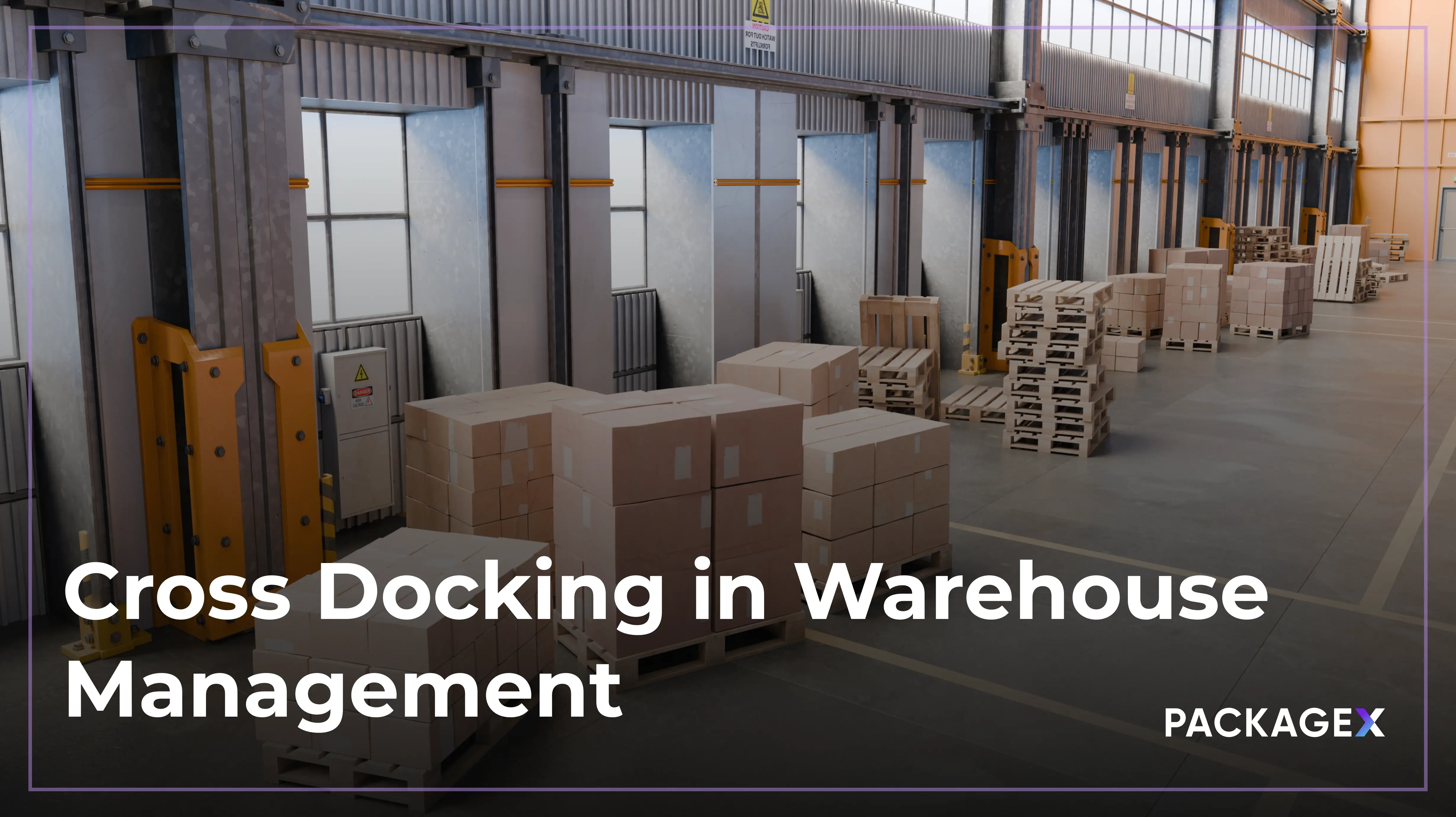Ever wonder how an online order gets from a warehouse shelf to your doorstep?
The answer lies in pick and pack fulfillment, a process that involves selecting items from inventory, packing them, and preparing them for shipment. It’s a core part of order fulfillment that directly impacts speed, accuracy, and customer satisfaction.
The global market for packaging automation is projected to hit $127.5 billion by 2029, growing at over 10.1% annually.
Despite its importance, picking and packing can slow things down. Over 50% of warehouse labor is spent on manual work. Which adds time and cost. That’s why now companies are investing in smarter solutions.
With good inventory management and the right technology, businesses can quickly pick, pack, and ship orders. Businesses can streamline fulfillment, reduce errors, and scale operations.
In this blog, we’ll learn what is pick and pack fulfillment? How does it work, and what methods do leading businesses use to streamline it?
Here is a comprehensive guide that explains everything you need to know, so you can optimize your pick and pack fulfillment strategy for the years ahead.
What is Pick and Pack Fulfillment?
Pick and pack order fulfillment occurs in a warehouse when an order is placed from an e-commerce store. It refers to a process during which customer orders are sourced from inventory, processed, and prepared for delivery.
It involves three key steps:
Picking, packing, and shipping.
- Picking: Picking is finding and retrieving the right quantities of each product from its location in the warehouse using a picking list.
- Packing: Packing involves placing items into boxes along with documentation and appropriate packing materials to prevent any damage.
- Shipping: After packing, the order undergoes labeling and sorting before being shipped to the end user via a designated carrier.
How Does Pick and Pack Fulfillment Work?
Many e-commerce stores get pick and pack fulfillment services from a 3PL provider or manage their own order fulfillment. In both cases, the process is the same.
Let's see how the picking, packing, and shipping processes work!
1. Order Receiving
The first step of the process is order receiving. E-commerce sales channels are typically integrated with warehouse management systems. A warehouse fulfillment software creates a packing slip when an order is placed online.
2. Order Picking
The warehouse worker then uses that packing slip and picks the items from the warehouse shelves for order fulfillment. It is the core step of the pick and pack service where inventory storage strategies and pick and pack methods play a vital role, as they determine the efficiency of this step.
3. Order Packing
Once the picking is done, the order is sent to the packing station, where it is packed safely, sealed, and labeled for delivery.
4. Order Shipping
Here, the carriers sort the orders on the loading dock. After that, the orders are ready to be picked up by the carriers.
Order shipping might seem simple, but it is a complex science. It is necessary to have sufficient knowledge of efficient pick and pack fulfillment methods to run the business smoothly, whether it is a million-dollar online store or a small e-commerce shop.
What Are Pick and Pack Fulfillment Methods?
Some of the basic pick and pack warehouse methods that many e-commerce businesses use for order fulfillment are listed below:
Picking Strategies
There are four different ways to perform pick and pack warehouse operations, which include:
- Piece Picking: Piece picking involves taking the packing slip for a single order and moving around the warehouse to pick items off the shelves. Once everything is picked, the order is taken to the packing station. Piece picking is the simplest pick and pack method for small businesses.
- Batch Picking: Batch picking is suitable for businesses with a large number of orders that need to be organized into batches. Each batch contains items found in the same area of the warehouse. For example, if one item is needed in numerous orders, it is wise to pick those orders together to avoid walking back and forth in the warehouse.
- Zone Picking: Zone picking is another pick and pack method appropriate for large fulfillment warehouses. In this technique, pickers stay in a warehouse zone and pick the items in their zone. After that, the order is passed onto the next zone, and as it moves through all the zones, it is sent to the packing station.
- Wave Picking: Wave picking combines batch and zone picking, where workers pick items within a zone for batch orders, compared to a single order. After that, the batch is passed to the next zone for further picking.
Packing Strategies
Efficient and strategic packing is a critical component of order fulfillment in e-commerce. Common packing strategies include:
- Cartonization: Cartonization is the art of selecting the optimal packaging size for each order. By utilizing the right-sized packaging, businesses can minimize excess space, reduce shipping costs, and protect products during transit. Advanced software solutions analyze order dimensions and recommend the most appropriate box size for each shipment, streamlining pick and pack warehouse operations.
- Kitting: Kitting involves bundling multiple products into a single package. This strategy offers several benefits, including increased customer value perception, reduced individual packaging, and enhanced cross-selling opportunities. By combining items, businesses can create attractive product bundles that encourage larger purchases and improve customer experience.
- Branded Packaging: Branded packaging adds a touch of personality to each shipment. It allows businesses to reinforce their brand identity. Customized boxes, tissue papers, stickers, or thank-you cards bearing the company's logo and colors can significantly enhance brand recognition and build customer loyalty.
- Eco-Friendly Packaging Options: Pick and pack fulfillment can also support sustainability goals. By using recyclable or biodegradable packaging materials, businesses can reduce waste and appeal to environmentally conscious customers.
Benefits of Pick and Pack Fulfillment
The benefits of pick and pack fulfillment are numerous and can significantly impact the efficiency and success of a business. Here are some key advantages:
- Faster order processing:
A well-organized pick and pack fulfillment system speeds up the entire order processing, from receiving to shipping. This leads to faster deliveries and happier customers. - Lower labor and operational costs:
Pick and pack warehouse services reduce manual steps and optimize workflows. This cuts down on labor hours and overall fulfillment expenses. - Improved inventory control:
Real-time inventory updates from a pick and pack warehouse help keep track of stock levels and prevent overstocking or running out of products. - More accurate orders:
Using a structured pick and pack fulfillment process helps reduce errors. Customers get the right items, which lowers returns and increases satisfaction. - Flexible and scalable operations:
A pick and pack warehouse can adjust to changes in demand. Whether you're shipping a few orders a day or thousands during peak season, the system scales with your needs. - Lower shipping costs:
By consolidating items and packing efficiently, pick and pack fulfillment cuts down on shipping charges, especially when orders have multiple SKUs. - Better customer experience:
Faster delivery, fewer mistakes, and reliable service all lead to better reviews, higher retention, and a stronger brand reputation.
How to Improve the Pick and Pack Warehouse Fulfillment?
After becoming familiar with the basics of pick and pack, businesses need to learn how to improve the order fulfillment process at their warehouses. Optimizing picking and packing methods is essential to streamlining order fulfillment. Here are some valuable tips to optimize the pick and pack process.
Invest in a Warehouse Management System (WMS)
A warehouse management system (WMS) controls all the processes from when the product enters the warehouse to when it is shipped. Therefore, investing in a warehouse management system like PackageX is a wise option for businesses with a large inventory or high sales volume.
Focus on Automating as Many Processes as You can
Automation is crucial in logistics, especially in a multistage process such as order fulfillment. Businesses can increase accuracy and speed by automating their pick and pack fulfillment processes. Also, with automation, they get access to important data and insights that can be used to track progress and make improvements.
Design Warehouse for Optimal Efficiency
Based on the warehouse size and number of orders received, much time can be wasted moving from one storage bin to another to fulfill each order.
Therefore, the most efficient way to optimize picking and packing is to design the warehouse for maximum efficiency by:
- Placing top-selling products closer to the packing stations.
- Keeping a stock of items typically sold together in neighboring storage zones.
- Organizing the inventory from top-selling to low-selling.
Keep Your Inventory Updated
Keeping inventory updated and in stock is critical for efficient order picking. A robust inventory management system, such as the one offered by PackageX, provides real-time tracking, enabling teams to monitor stock levels and receive low-inventory alerts before issues arise.
How PackageX Can Help Optimize Pick and Pack Fulfillment?
PackageX simplifies the entire pick and pack fulfillment process, helping businesses speed up order processing, reduce manual errors, and scale operations without complexity. Whether you're managing a small warehouse or fulfilling thousands of orders a day, PackageX brings automation and accuracy to every step.
Here’s how PackageX can help:
- Real-time inventory tracking to avoid stockouts and overstocking.
- Automated order picking with smart workflows and barcode-based validation.
- Faster and more accurate packing with digital packing slips and order details.
- Easy integration with e-commerce and shipping platforms for end-to-end logistics.
- Scalable pick and pack warehouse services without the need for extra overhead
PackageX offers a modern, API-first logistics fulfillment system that’s built to streamline pick and pack warehouse operations, from receiving inventory to shipping the last package out the door.
FAQs
What is the warehouse pick and pack process?
The warehouse pick and pack process involves selecting ordered items from inventory (picking), then packing them securely for shipment. It’s a key part of order fulfillment that ensures products are correctly retrieved, packed, and shipped to customers efficiently.
What are the benefits of outsourcing pick and pack services to a third-party provider?
Outsourcing to a third-party logistics (3PL) provider or fulfillment center offers several advantages. It gives businesses access to expert staff, advanced technology, and optimized infrastructure. This results in faster processing, improved accuracy, and cost savings, while allowing teams to focus on core business operations. It also adds flexibility to scale during peak seasons.
What technology is used in pick and pack fulfillment?
Pick and pack fulfillment relies on tools like warehouse management systems (WMS), barcode scanners, order management software, and automated sorting systems. These technologies help improve order accuracy, speed up processing, and provide real-time visibility into inventory and shipments.
Can pick and pack services handle international shipping?
Yes, most pick and pack fulfillment providers support international shipping. They handle customs documentation, local regulations, and proper labeling to ensure orders arrive smoothly across borders. This is especially useful for e-commerce businesses with a global customer base.



%20Process%20Flow.webp)
